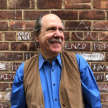Review of 'The Man in the High Castle' 3.4-6
"Tis Death That's Dead"

The Man in the High Castle episodes 3.4-6 contain the biggest stunner of the series. It's so unexpected, and handled so well, that I won't say what it is, on the slim chance that you're reading this and haven't yet seen these three episodes.
I will offer this proviso: when you're dealing with intersecting alternate realities, as The Man in the High Castle is most surely doing this season, anything that happens in our point-of-view reality can be reversed or undone, or at very least deprived of its impact, by the same character or characters from another reality popping into ours (or arriving by whatever means). Or as the poet Shelley wrote about Keats in our reality, "tis death that's dead not he."
And the potential for undoing or reversing animates everything and everyone in the multi-verse that this season of The Man in the High Castle has become. All that remains in question in which things or people.
Meanwhile, the action in our reality—that is, the point-of-view alternate reality in which the Nazis and the Japanese won the Second World War—remains taut and excellent. I said in an earlier review that J. Edgar would always act in his own best interest, and that's just what he does in these episodes, as Smith, always one step ahead of the game, uses Edgar to turn the tables. The consequent killing of George Lincoln Rockwell (I never said there would be no spoilers at all in these reviews) is a satisfying touch, since Rockwell was in fact murdered in our off-screen reality, in which we won the war. And speaking of deft details, we also learn that in this alternate history John Wayne left the screen to fight with the Americans (of course) and lost his life in the "Battle of Dayton," and Joe DiMaggio plays for the "New York Valkyries" (I hope they whip Boston, whatever their name).
Smith continues to be a riveting character—brilliantly played by Rufus Sewell (all the parts are well acted, but William Forsythe's sieg heiling J. Edgar also warrants special kudos)—and now we're tasked to wondering what he'll do about his wife. I just can't see him killing his wife, as Himmler told Smith he would have to do if she displayed any more weakness, but you can never be 100 percent sure about these things.
The final scene in episode 3.6 was one of the most effective and iconic of the series: Smith getting a ticker-tape parade, Nazi-style, in New York to mark his promotion, intercut with Frank Frick's bar mitzvah (yes, he's alive) in Denver. That says it all about the resilience of freedom in the face of overwhelming power.
And I'll be back here soon, likely after I've seen the concluding four episodes of this superb season.

About the Creator
Paul Levinson
Novels The Silk Code & The Plot To Save Socrates; LPs Twice Upon A Rhyme & Welcome Up; nonfiction The Soft Edge & Digital McLuhan, translated into 15 languages. Best-known short story: The Chronology Protection Case; Prof, Fordham Univ.






Comments
There are no comments for this story
Be the first to respond and start the conversation.